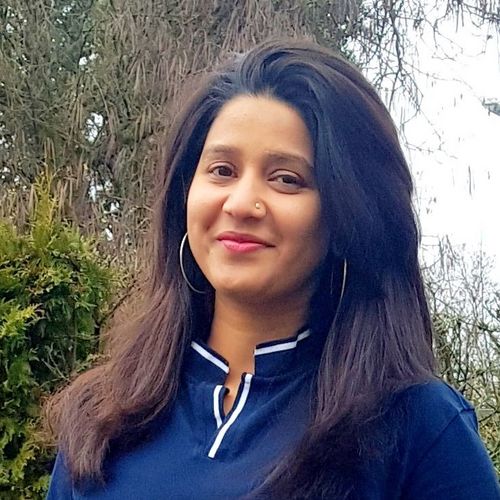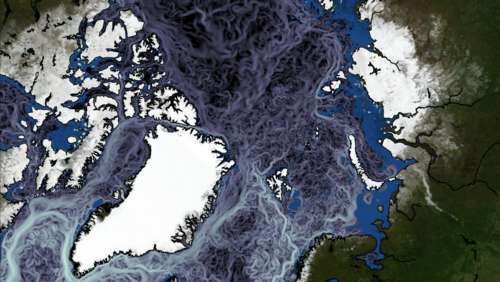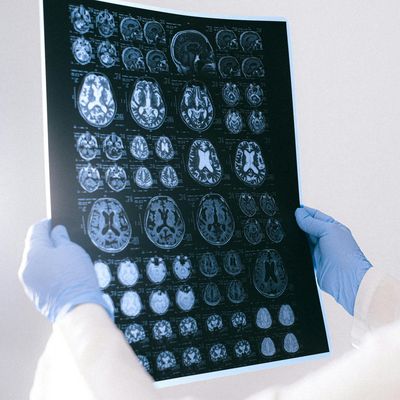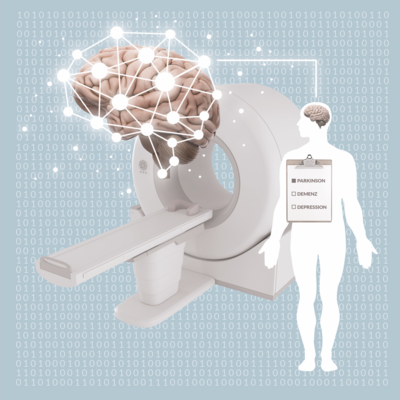Modeling ocean currents
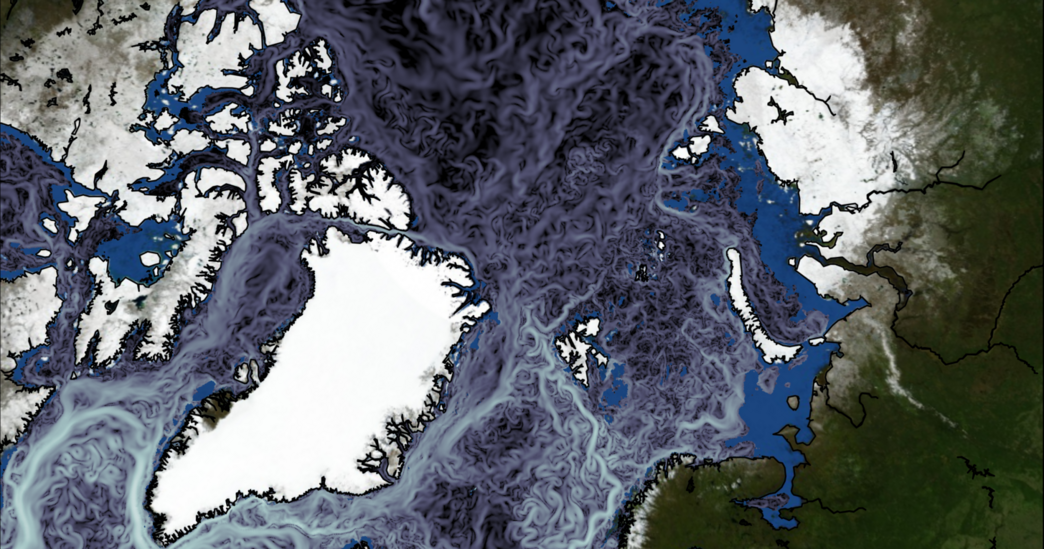
Even small ocean currents can have a significant impact on the climate. Sonal Rami's research at the MarDATA will help to predict these currents more accurately. By using machine learning methods, she is working on making complex ocean models even more precise - to enable more reliable predictions of climate change.
“With every breath we take and every drop of water we drink, we are directly connected to the ocean,” says data scientist Sonal Pravinbhai Rami. “Marine science connects directly to day-to-day life.” It’s that belief that brought Rami from a computer science teaching position at a university in India just a short drive from the warm waters of the Arabian Sea to the German port city of Bremerhaven in 2019.
For the computer science expert, Germany was a perfect spot to nourish two of her passions. “I’m a thalassophile. I’m fascinated by water,” Rami says. “I spend all my time with computers and love to do coding in Python, but I’m also fond of the ocean.”
That, Rami says, is part of the reason the Helmholtz School for Marine Data Science MarDATA seemed like a perfect fit when she decided to take her academic career to the next level. Now based in Bremerhaven, Rami is putting her skills as a teacher and machine learning expert to work improving sophisticated models of the world’s oceans.
It’s a critical job. Oceanographers have access to a steady stream of information, from sea surface temperatures and sea ice levels to ocean current speeds. With all that information flooding in, translating it all into meaningful predictions is a challenge. “In oceanography, there’s more and more data coming in every day,” Rami says. “With so much data, how can you gain knowledge from it?”
Optimize the ocean model FESOM
As part of her doctoral thesis, Rami is working on ways to interpolate sea surface temperatures to streamline oceanographic modeling. Her PhD focuses on improving the Alfred Wegener Institute’s Finite-Element/volume Sea Ice-Ocean Model, known as FESOM. First introduced in 2004, it’s one of the institute’s most powerful climate modeling tools.
FESOM is essentially computer code capable of simulating how ocean currents all around the globe are impacted by sea ice. The way ocean currents interact is also part of the model – if water slows down in the Arctic, for example, there’s a ripple effect that pulses through marine environments around the world.
Because more than 70 percent of the world’s surface is covered by oceans, the behavior of their currents plays a huge role in the global climate. For oceanographers and climatologists, predicting climate change depends on understanding the oceans’ contribution. Over the past decade, FESOM has contributed to climate change assessments put forward by the Intergovernmental Panel on Climate Change, considered the gold standard for climate change research.
It’s no small job. Ocean currents are fiendishly complex. In the real world, ocean eddies – microcurrents that cumulatively add up to major trends – can be as small as 1 km and as wide as 25 km. But because of the sheer complexity of ocean systems, it takes lots of computing power to build accurate models. Computing limitations mean FESOM and other ocean models only calculate currents down to a resolution of 100 km, and often less.
By teaching computers to make predictions based on past models, Rami hopes to make it possible for FESOM to make accurate forecasts about the future using so-called neural networks. “My goal is to provide machine-learning solutions for oceanography and climate modeling,” Rami says.
Interpolation can simplify mathematical modeling
She’s focused on a technique called interpolation, which is like drawing a picture by connecting dots: Rather than draw all the lines each time the model is computed, Rami is teaching the computer to predict the movement of ocean currents faster and more efficiently based on a few data points. “Ideally,” Rami says, “we don’t need to store the middle data.”
In other words, if sea surface temperatures in a particular region are 25 degrees in January and 27 degrees in March, “what about February?” Rami asks. “Using machine learning, we can more intelligently fill up the middle data” – and assume February’s temperatures were about 26 for the purpose of the ocean model.
Of course, the real world is far more complex. But with enough data, “you plug in variables” – sea surface height, temperature, salinity, and wind velocity, for example – “and get predictions,” Rami says. “It’s a cheap but effective solution that uses data-driven approaches for the forecasting and reconstruction of sea surface dynamics.”
Rami’s PhD is supervised by researchers from the Alfred Wegener Institute, the GEOMAR Helmholtz Centre for Ocean Research in Kiel, and the University of Bremen. Such collaboration is an example of what MarDATA – which brings together scientists from the Helmholtz Association, the Alfred Wegener Institute Helmholtz Centre for Polar and Marine Research and several German universities – does well.
With 15 doctoral researchers under the supervision of researchers from different institutions, the school is part of the Helmholtz Information & Data Science Academy (HIDA), Germany’s largest post-graduate education network for data and computer science.
"I thought, why not Germany for a PhD? It’s a world leader in terms of technology, and German scientists are moving really fast when it comes to machine learning."
Sonal Rami, doctoral researcher at MarData
Research at MarDATA: "Great background"
The interdisciplinary opportunity to combine data science and oceanography wasn’t the only reason Rami applied to MarDATA. As an assistant professor in India she worked on climate models for the Indian Space Agency, sparking an interest in the topic.
And her first experience in Germany, at a series of expert lectures on machine learning run by the Max Planck Institute for Intelligent Systems in Tuebingen, was overwhelmingly positive. “I really got inspired,” she says. “I thought, why not Germany for a PhD? It’s a world leader in terms of technology, and German scientists are moving really fast when it comes to machine learning.”
So far, the collaborative nature of MarDATA suits the former teacher well. “We have discussions every day, I meet with my supervisor twice a week,” Rami says. “I get so many suggestions and great feedback on my work.” With researchers spending most of their time at home as a result of the Covid19-crisis, Rami’s fellow doctoral students have even set up virtual common rooms to socialize.
And although she arrived with a deep background in data and computer science, her time at MarDATA began with a block course that immersed doctoral researchers from different disciplines in the basics of oceanography and climate science. “We looked at ocean chemistry, biodiversity, physical oceanography, climatology – all great background,” Rami says.
Her project is moving forward fast. She’s already eyeing ways to interpolate variables beyond sea surface temperature, like wave height. And she’s convinced machine learning has tremendous potential when it comes to climate research beyond the oceans. “The long-term vision is to go beyond interpolation and create solutions for bigger climate models,” Rami says. “Hopefully at some point there won’t be any need to run physical models again and again, no need to store all the middle data. Machine learning can improve the realism of climate models.”
Author: Andrew Curry

